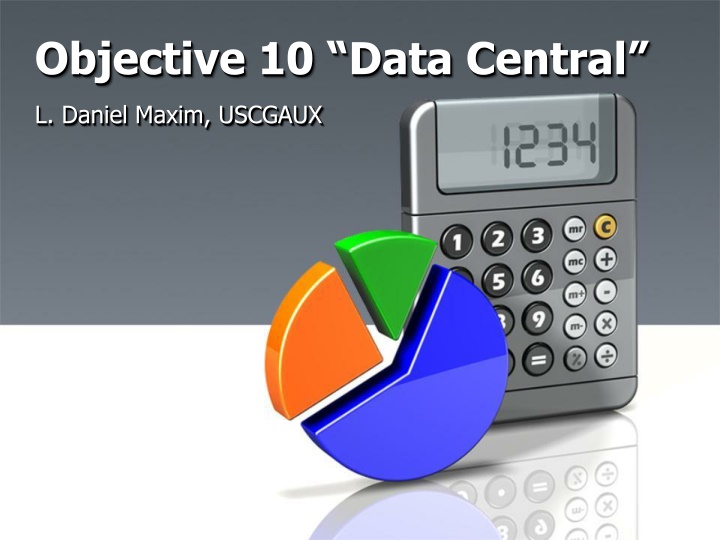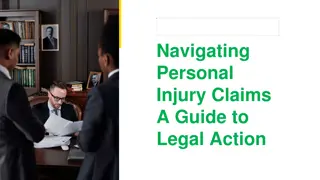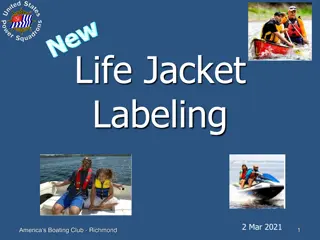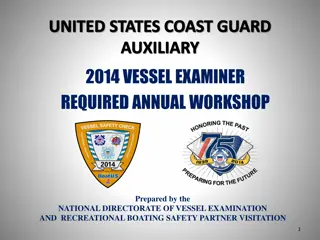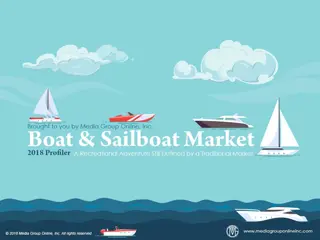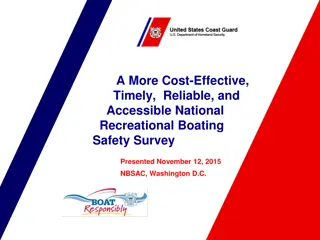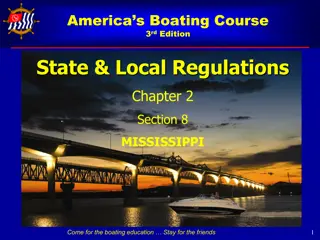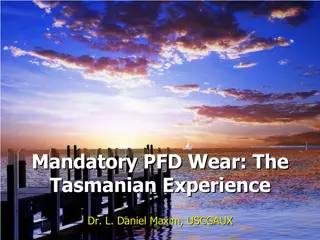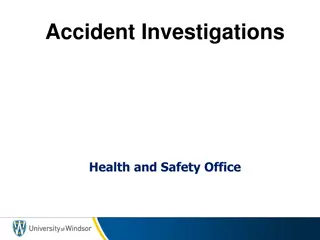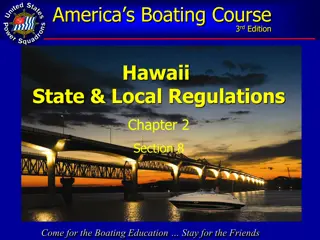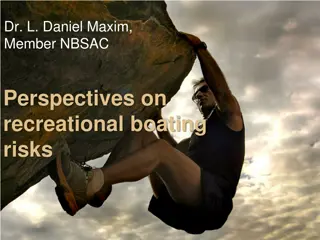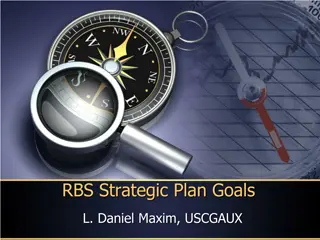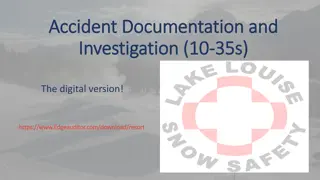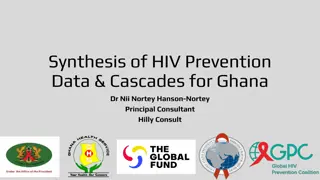Integrating Data Strategies for Boating Accident Prevention
This content focuses on Objective 10 which aims to assess and improve boating accident data quality. It discusses strategies, like the National Boating Survey and Life Jacket Research, to generate key statistics for evaluating safety measures. The goal is to develop more impactful analyses using data-driven approaches to enhance safety strategies effectively.
Download Presentation

Please find below an Image/Link to download the presentation.
The content on the website is provided AS IS for your information and personal use only. It may not be sold, licensed, or shared on other websites without obtaining consent from the author.If you encounter any issues during the download, it is possible that the publisher has removed the file from their server.
You are allowed to download the files provided on this website for personal or commercial use, subject to the condition that they are used lawfully. All files are the property of their respective owners.
The content on the website is provided AS IS for your information and personal use only. It may not be sold, licensed, or shared on other websites without obtaining consent from the author.
E N D
Presentation Transcript
Objective 10 Data Central L. Daniel Maxim, USCGAUX
Dramatis Personae Objective 10 Core Team: L Daniel Maxim (USCGAUX) Fred Messmann (NSBC) Richard Moore (State of Florida, NASBLA) Susan Tomczuk (USCG) With guest stars Philip Gwet (USCG) Deb Gona (Gona and Associates) Chuck Hawley (West Marine) 2
Rationale In God we trust, all others bring data The Strategic Plan needs to be data-driven Over the years, Coast Guard and partners have worked to improve coverage and accuracy of data, but problems (opportunities) remain We also need to develop more meaningful analyses of data and to develop methodologies to respond to questions 3
Objective 10 Integrates data improvement and analysis strategies Strategies linked to numerous other objectives in Strategic Plan Benefits indirect does not save lives directly but enables identification of issues, hypotheses, and provides basis for quantitative analysis of options 4
Objective 10 Assess and improve the quality of boating accident data Generate new data to fill data gaps Provide key statistics Use data to evaluate the effectiveness of various strategies to reduce accidents and casualties 5
Strategies included Strategy 10.1: National Boating Survey Strategy 10.2: Life Jacket Research Strategy 10.3: Measure Exposure Strategy 10.4: Improvements to BARD Strategy 10.5: Data analysis Strategy 10.6: Research on methods to correct for or compensate for non- response 6
10.1 National Boating Survey Periodic survey of boaters Key output: improved measures of exposure (days, hours underway) to enable improved risk estimates Other outputs: boater attitudes and awareness of safe boating practices Survey instrument developed and contractor selected Expensive, but worth it if successful 7
10.2: Life Jacket Research Greater use of life jackets key to reducing fatalities Need research to measure and track wear rates (annual survey) Need to develop methodology for estimating fatality reductions associated with greater life jacket wear 8
10.3: Measure exposure Use National Boating Survey data to derive improved exposure statistics (denominator) for risk estimates Investigate suitability of possible surrogates for exposure estimates derived from National Boating Survey More cost-effective choices? Plan B in event that survey-derived estimates found wanting 9
10.4: BARD improvements Search for data gaps or limitations of present system Results used to: Redesign accident reporting structure and forms Clarify definitions of data fields Provide training to reduce frequency of missing data and improve accuracy 10
10.5: BARD data analysis Continued analysis of BARD data Present analyses (e.g., those presented in Boating Statistics) Search for improved/novel methods of analysis and data displays More rigorous hypothesis testing Exploratory data analyses (EDA) Improved displays 11
Data analysis example Fatality-accident map derived from 2008 data by contributing factor Importance of BUI clearly evident from this data display 12
10.6: Non-response Fatal accidents and fatalities accurately reported (99% coverage) Non-response rates much higher for other reportable accidents leads to underestimate of social costs of boating accidents Need to search for ways to increase response rates or make corrections for unreported injuries and PDO accidents 13
